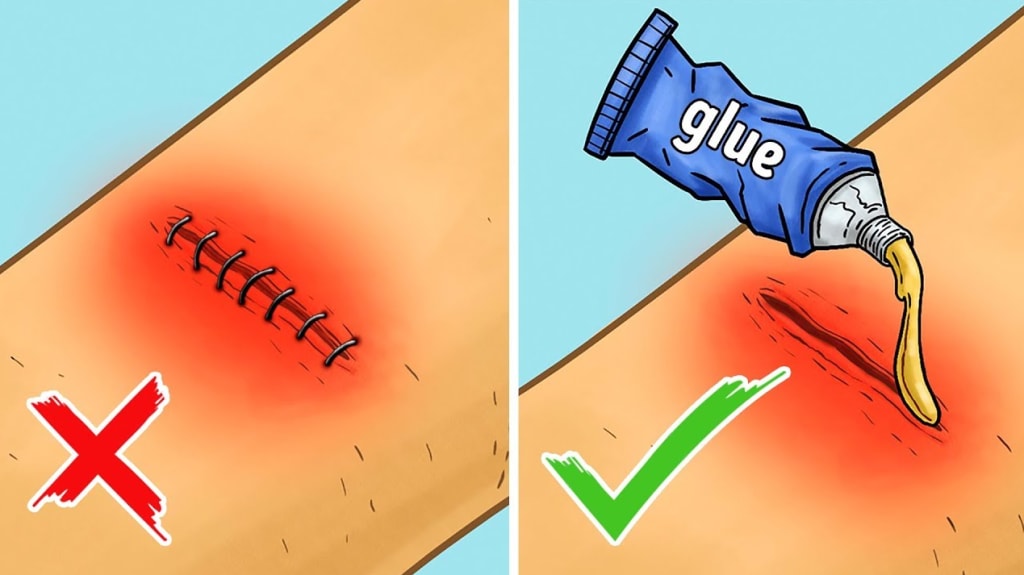Twelve Essential Survival Tips for Emergency Situations
Mastering the Art of Survival: Twelve Essential Tips to Navigate Emergency Situations

When faced with an emergency situation, the initial instinct is to rely on the advice of friends and family. However, it is important to note that even well-known and popular recommendations can sometimes be incorrect and even harmful. Did you know that applying ice to a bruise is not the most effective solution, and lifting an unconscious person may have severe consequences? In this article, we will present twelve life hacks that can help you navigate through challenging situations.
Dealing with a Foreign Object in the Eye
If you have something lodged in your eye, such as a piece of glass, it is crucial not to attempt to remove it yourself. Instead, seek assistance from someone who can drive you to the hospital. However, if it is a simple eyelash, take the following steps: First, ensure you wash your hands thoroughly. Then, use a mirror to locate the eyelash and blink to stimulate tears that can help flush it out. Once the object moves to the corner of your eye, use a damp cloth to gently remove the eyelash.
Applying Ointment to a Wound
Avoid applying ointment or creams to wounds as they can create a moist environment, promoting bacterial growth. It is best to clean the wound with cool water and soap, then cover it with a dry bandage. This approach promotes faster healing.
Rubbing Alcohol or Vinegar on a Person with a Fever
Contrary to popular belief, rubbing alcohol or vinegar on a person with a fever is not advisable. These substances can be absorbed into the bloodstream, potentially leading to intoxication or increased acidity levels, which can be especially dangerous for children. Instead, encourage the individual to drink plenty of non-alcoholic fluids, such as water or tea, and ensure the room temperature is between 61 to 64 degrees Fahrenheit (16 to 18 degrees Celsius) for optimal comfort. If the fever persists, medical attention should be sought.
Lifting an Unconscious Person
In the event that someone faints, the common misconception is to lift them up and sprinkle cold water on them. However, this can worsen the situation and lead to spasms. Instead, elevate the person's legs, loosen any tight clothing, and avoid having them stand up immediately upon regaining consciousness. Additionally, it is crucial to refrain from providing them with coffee or energy drinks, as caffeine can contribute to dehydration.
Treating Burns with Butter or Sour Cream
Using butter or sour cream on burns for pain relief is a misconception. While the temporary cooling effect may provide some relief, these substances can dry the skin and disrupt thermal exchange. This can result in deeper heat penetration and further damage. Instead, hold the burned area under cool water for 15 minutes to alleviate pain. Blisters that form serve as protective barriers against infection, so it is essential to avoid popping them.
Setting a Dislocated Joint on Your Own
Unless you are a professional trauma surgeon, it is never advisable to set a dislocated joint on your own. Attempting to do so can lead to additional injuries and legal consequences. The best course of action is to immobilize the injured limb and seek immediate medical attention. Immobilize not only the dislocated joint but also the two closest joints to prevent further damage.
Applying Warmth to a Sprain
Contrary to popular belief, applying warmth to a sprained muscle or joint is not recommended. Heat can increase blood flow, leading to more severe swelling in the initial days after the injury. Instead, apply cold to the affected area to reduce inflammation and alleviate pain. Minimize the use of the sprained limb for at least 48 hours following the injury.
Avoid Inducing Vomiting in Case of Poisoning
Inducing vomiting in cases of poisoning is strictly prohibited. While it may seem like a reasonable response, it can lead to serious complications. First, there is a risk of the poison entering the lungs and causing damage. Secondly, if the poisoning involves certain chemicals, vomiting can increase the chances of throat burns. Moreover, once vomiting starts, it can be challenging to stop, potentially resulting in dehydration and further complications. In such situations, the best action is to call for an ambulance immediately.
Rescuing a Drowning Person
The only obstacle in rescuing a drowning person is if you lack swimming skills. If you are a capable swimmer, you can save a person's life by following a few guidelines. Approach the person from behind to prevent them from hindering your rescue efforts or dragging you down in panic. Once close, grab them under the armpits or by the chin, and move towards the shore while keeping their head close to your belly.
Pulling Out Objects from Wounds
While it may be acceptable to remove a splinter or small glass shard from a superficial wound, it is crucial never to attempt pulling out objects from serious wounds. Even medical professionals keep objects in place until the patient reaches the operating room. Leaving the object in the wound helps prevent bleeding. Therefore, until you receive professional medical attention, it is best to avoid touching the object and instead cleanse the wound with alcohol. Be prepared for increased pain when alcohol is applied. Remember, for deep or severe wounds, it is always advisable to seek immediate medical assistance.
Applying Ice to a Bruise
Treating a bruise with ice is generally acceptable, but it is essential to use the correct method. Instead of applying ice directly to the skin, which can cause cold burns, place a cloth or towel between your skin and the ice pack. However, even with a cloth barrier, there is still a risk of burns. Therefore, limit ice application to a maximum of 20 minutes at a time, followed by a 90-minute break. If you don't have a cloth available, it is better to avoid using ice altogether to prevent cold burns. Additionally, after 48 hours, ice application becomes less effective.
Using Stitches to Close Cuts
Using stitches to close wounds is a common and effective method; however, it is a lengthy and sometimes painful procedure that requires stitch removal once the wound heals. In certain cases, an alternative approach may be suitable: skin glue. Skin glue is a quick and virtually painless option. Before using the glue, clean the wound with cold water and apply pressure to stop bleeding. Then, close the wound edges and use skin glue to secure them. If the wound is large or complex, it is safer to seek professional help at a hospital.
In conclusion, these twelve life hacks provide valuable insights for handling emergency situations effectively. Remember to always prioritize safety and seek professional medical attention when necessary. Share this article with your friends to help them stay informed about first-aid practices. And don't forget to subscribe to our channel to stay connected with the bright side of life.
Please support me by following me on LinkedIn - https://www.linkedin.com/in/max-carter-10722950/
About the Creator
Max Carter
Hello there! My name is Max Carter, and I am a professional writer and creator of stories for kids. I have always had a passion for writing, and I have been fortunate enough to turn that passion into a career.






Comments
There are no comments for this story
Be the first to respond and start the conversation.